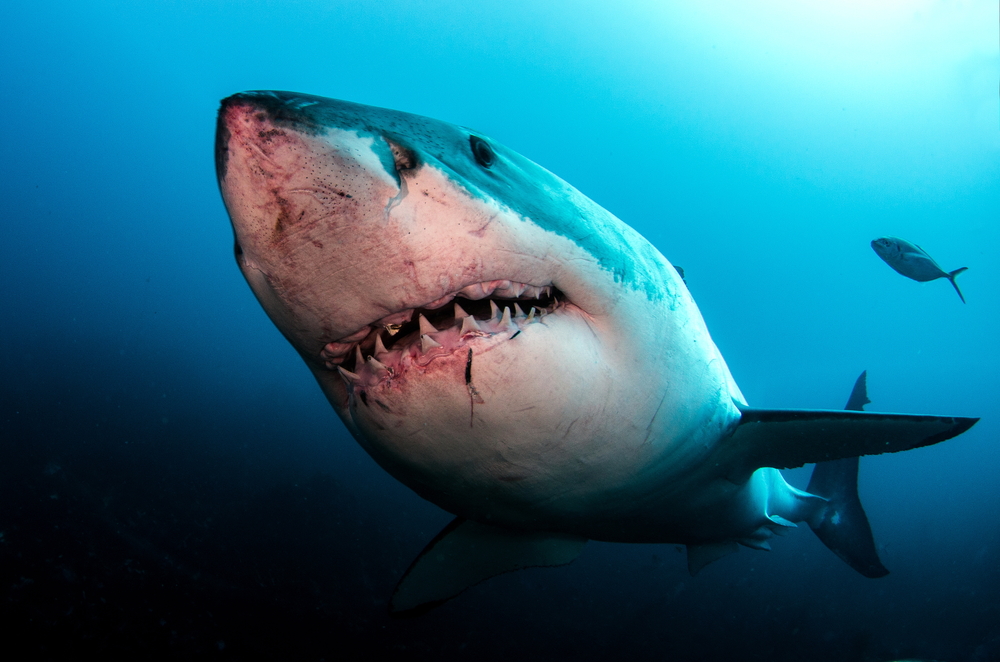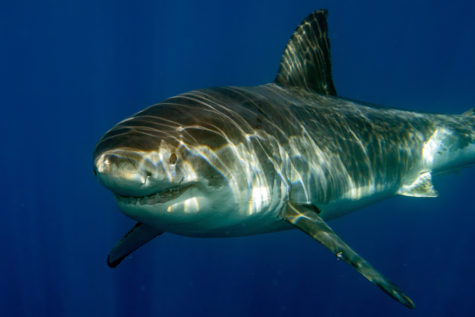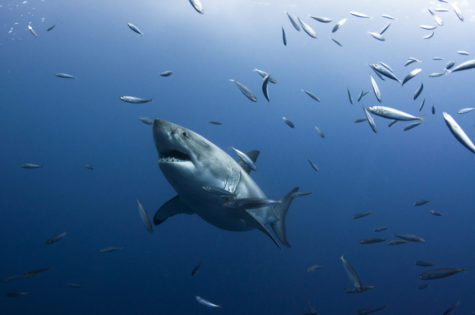 In this month’s issue of National Geographic, I lay out a simple question. How many great white sharks are there on Earth?
In this month’s issue of National Geographic, I lay out a simple question. How many great white sharks are there on Earth?
It seems simple enough – we’ve found some 3,500 planets outside our solar system and 400,000 species of beetles on Earth. This is the modern world of crowdsourcing and big data. We can go online and learn that the black-rumped agouti has 857,000,000 neurons in its brain. How hard is it to count 18-foot fish eating giant animals that lay out on rocks all day? When I started this project I figured we had not only counted them all but named them as well.
Boy, was I in for a surprise. It turns out that we have almost no idea how many great white sharks there are on Earth. These are not agoutis – which, chances are, you had to google just now – this is the world’s most iconic sea creature. Not only is this surprising but it’s a big problem since you can’t protect a population if you don’t know how big it is. How can we tell if great whites are in trouble if we don’t know how many there are? And how can we tell if their populations are improving? From a policy perspective, no other question really matters.
That’s not to say people haven’t taken stabs at it. An alarming 2011 paper estimated the population in the notoriously sharky waters of Central California at 219. Which was shockingly low until another came out using the same data that put it north of 2,000. So I guess it depends on how you count. Which raises a really interesting question: How do you count sharks?
The answer, as you might expect, comes down to Scottish taxicabs. That’s not a joke, I’m dead serious. If you want to understand the future of great white sharks on Earth, you must first understand the only taxi drivers on Earth who (I can only assume) all wear kilts.
 But before I get to Scottish taxis, perhaps it’s better to start with pistachios. Imagine for a second you are eating a bowl full of pistachios in your new girlfriend’s house. Being a lazy slob, you forgot to get a second bowl to put the shells into. You cannot just put the shells on the coffee table, lest your new girlfriend realize you are a lazy slob and start asking about your roommate. So you opt to just put them back into the same bowl.
But before I get to Scottish taxis, perhaps it’s better to start with pistachios. Imagine for a second you are eating a bowl full of pistachios in your new girlfriend’s house. Being a lazy slob, you forgot to get a second bowl to put the shells into. You cannot just put the shells on the coffee table, lest your new girlfriend realize you are a lazy slob and start asking about your roommate. So you opt to just put them back into the same bowl.
Now, as you eat, you will start pulling up more and more empty shells. Presuming you are mixing the shells into the bowl well, once you start finding 50 percent of your handfuls are empty shells, you know you’ve eaten through half of the pistachios. Now might be a good time to offer your girlfriend a pistachio if you want the relationship to go anywhere.
This is the essence of what wildlife biologists call mark-recapture. By marking a bunch of individuals within a population and then releasing them, you can estimate the total population once you recapture enough of them again. And these estimates can be surprisingly precise, which brings us to the Scottish taxicabs.
In 1972, a clever statistician named Andrew D Carothers at the University of Edinburgh decided to test mark-recapture, which by then had been used to estimate populations of rabbits and squirrels, by counting wild Scottish taxicabs. He set up two researchers at fixed points around the city and had them note down the cabs’ registration numbers. Over five days, just as with sharks or squirrels, some showed up a few times while some were never seen again.
 In the end, it was the same kind of data you might see with pistachios, except he had only seen a fraction of the total number of taxis. Yet he was still able to calculate that there were 420 cabs in the city, which, amazingly, was the exact number registered with the police at the time.
In the end, it was the same kind of data you might see with pistachios, except he had only seen a fraction of the total number of taxis. Yet he was still able to calculate that there were 420 cabs in the city, which, amazingly, was the exact number registered with the police at the time.
This, essentially, is the technique that marine biologists use to estimate great white shark populations around the world. And the numbers are surprising dim. Two hundred or so in Central California, 1,000 in South Africa, 120 in Mexico.
These are not big numbers. In the story, I used these numbers to take a wild guess at the global population of great whites and came up with a number roughly on par with the few thousand wild tigers left in the world. Tigers, as I don’t have to remind you, are one of the planet’s more critically endangered predators.
Yet this isn’t the whole story. Remember, it’s all in how you count. Critics have pointed out that the lowest estimates don’t include juveniles, which don’t tend to hang out with the adults. It’s not clear at what age great whites become mature (around nine or ten feet long) but it seems to be quite a few years, meaning there could be a lot of them. In fact, so many that adults might only make up 10 percent of a population.
 But there is a bigger question. In the story, I describe the five or six primary hubs where great whites congregate. If you want to study great whites, you have to go to one of these spots – otherwise you’ll just spend your time wandering aimlessly through the ocean hoping to get very, very lucky. But that doesn’t mean that these hubs represent the whole population.
But there is a bigger question. In the story, I describe the five or six primary hubs where great whites congregate. If you want to study great whites, you have to go to one of these spots – otherwise you’ll just spend your time wandering aimlessly through the ocean hoping to get very, very lucky. But that doesn’t mean that these hubs represent the whole population.
In the taxicab study, there was one big, unspoken assumption: That all the Edinburgh taxicabs were in Edinburgh. After all, there could be some secret cluster of 1,000 Edinburgh cabs driving around the town of Brokenwind (yes, that’s a real Scottish town). Or sitting in a parking lot in Cockburnspath (yes, that’s another). Or a secret warehouse full of them in Twatt (seriously – who names these places?).
The chances of this are slim when it comes to cabs but are less so for sharks. Female sharks in Northern California are curiously MIA for years at a time, meaning they could be hanging out somewhere with a bunch of less social sharks. And in other hubs, we still have little idea who goes where and when. So it’s completely possible that only some of the population hangs out in the known hubs while the rest wander aimlessly, like lions without a pride.
And if that’s true, and if you were to estimate these much larger numbers, the global population would look a lot more like the tens of thousands of African lions, which are certainly threatened but much better off than wild tigers.
 So where does that leave us? Are great whites like lions or are they like tigers?Well, no one has found a secret population of great whites hiding out somewhere – say in Monte Carlo, playing craps and being rude to the casino staff. So perhaps it’s best to go with a lower number. Then again, if a population was to rebound it would start with the juveniles, right? This might explain why so many sharks have been spotted lately in Southern California – a region associated with younger great whites.
So where does that leave us? Are great whites like lions or are they like tigers?Well, no one has found a secret population of great whites hiding out somewhere – say in Monte Carlo, playing craps and being rude to the casino staff. So perhaps it’s best to go with a lower number. Then again, if a population was to rebound it would start with the juveniles, right? This might explain why so many sharks have been spotted lately in Southern California – a region associated with younger great whites.
Or maybe there never really were many great whites in the first place. I suppose it all depends how you count.
Photo Credit: Shutterstock
The one fact that few humans seem to count is that the OCEAN is SHARKS’ home. NOT HUMANS’. And I have never, ever, except for on an old comedy TV show, seen a shark attack a human being on land. *except, of course, for lawyers*